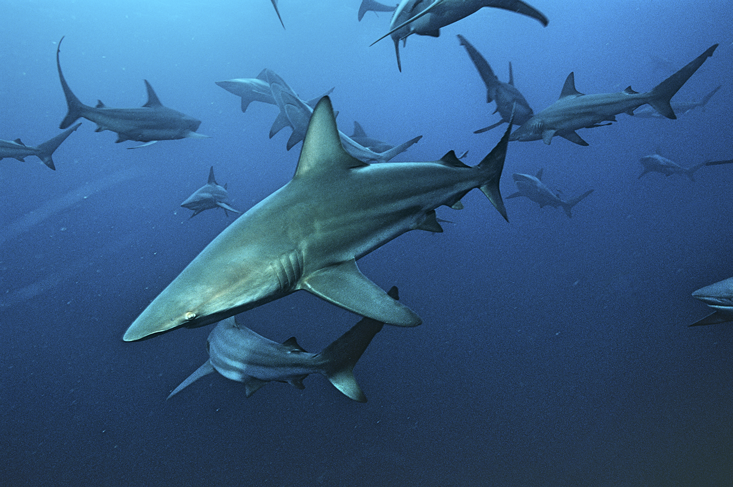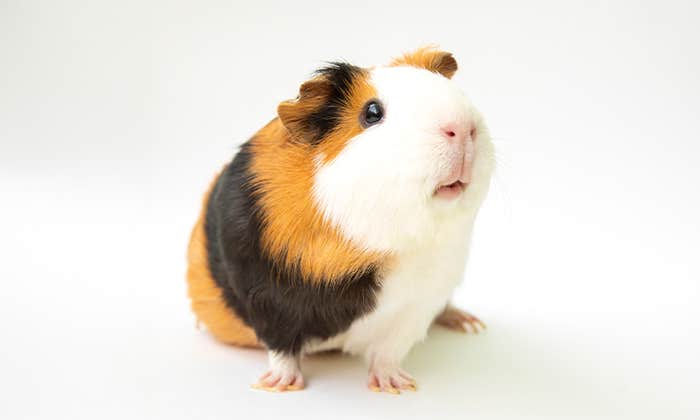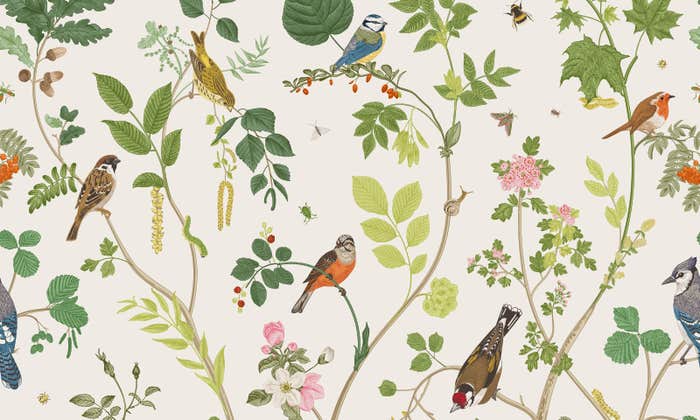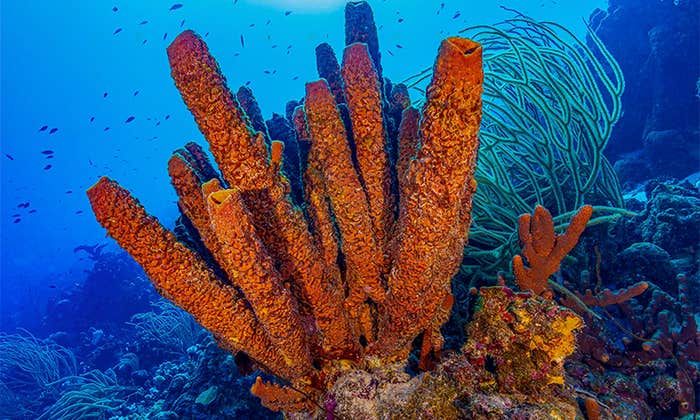What is sex for? When I regularly queried students at the beginning of my course in evolutionary biology, most responded that it was for reproducing. Reasonable enough, but wrong. In fact, lots of living things reproduce without sex: Asexual reproduction is found not only in many forms of archaea and bacteria, but also in numerous plants and protists, as well as in fully one half of all animal phyla.
Baker’s yeast reproduce by budding, as do hydra and parasites such as tapeworms. Other creatures, including fungi and some algae, make spores without sex. Some reproduce when pieces of themselves generate new individuals—that is, by fragmentation—as among planarians and a number of annelid worms and marine oligochaetes. Then there is parthenogenesis, literally from the Greek partheno (virgin) plus genesis (creation). Such virgin birthing is the norm among water fleas and rotifers. It has been found in at least two species of sharks (hammerheads and blacktips), and is regularly employed by New Mexico whiptail lizards and occasionally by boa constrictors, although it has not—yet—been reported for any birds or mammals. (Or humans, except for one supposed instance.)

The evolutionary quandary isn’t why so many organisms reproduce without sex, but why any use it. This is because the payoffs of asexual baby-making are quite clear, while its male-and-female based alternative is loaded with liabilities. Given that the bottom line for evolutionary success is projecting one’s genes into the future, sexual reproduction is necessarily an uphill struggle because the offspring of a sexually reproducing individual will carry only half of his or her genome, that present in either egg or sperm. More accurately from a biological perspective, any gene in such a parent will have a 50 percent chance of ending up in a child, whereas offspring generated asexually are genetically identical to their parent, so 100 percent of the progenitor’s genes will be replicated in each one. Measured by literal DNA transmission, breeding sexually therefore exacts an unavoidable 50 percent tariff. Given that fitness differentials of less than 1 percent are able to drive massive evolutionary changes, this is an immense disadvantage.
Moreover, sex carries other costs. It requires a partner and finding one can be troublesome. It appears, for example, that once breeding populations fall below a certain level, they may be endangered simply because of the difficulty of locating a mate, as appears the case among Indonesian rhinos and blue whales. Even if that problem is solved, a huge toll is often exacted upon males in particular because of male-male competition, which in turn frequently generates high levels of violence, resulting in the generally shorter lifespans of males compared to females. Direct competition aside, the necessity of coordinating sexual behavior, often combined with the need to persuade a chosen member of the opposite sex, results in the conspicuous courtship displays that although pleasing to the human eye and ear, involve expenditure of time and energy, while making the participants more detectable by potential predators.
Sex is a bad deal, a biological trap into which our distant ancestors fell, and with which we are stuck.
In their quest to be attractive to the opposite sex, male animals in particular have often evolved elaborate secondary sexual characteristics, such as feathers, wattles, and bright colors, which typically exact a substantial metabolic toll. Once mating is in the offing, females are especially at risk of being physically injured by their male partners, who are frequently larger, more ardent, and not uncommonly disinclined to take no for an answer. Nor is mating itself, even when mutually agreed upon, without risks. Because natural selection normally favors personal reproductive success and not that of one’s partner, sexual reproduction makes each participant susceptible to wiles and misrepresentations by the other, each of which can be selected to deceptively exaggerate his or her suitability as a mate.
In addition, there’s the risk of sexually transmitted diseases, a problem that is avoided altogether if—as your sex ed teacher may have repeated ad nauseum—one refrains from sex!
More troubles yet. A sexually produced youngster has a 50 percent chance of sharing a gene with a parent, so it’s only 50 percent interested in the fitness—the ability to pass genes into the future—of its parents. But an offspring is 100 percent interested in itself, and demands parental attention, which further limits its parents’ evolutionary success. This unavoidable conflict of biological interest, first pointed out by Robert L. Trivers, bedevils sexual breeders, whereas literally no parent-offspring conflict is found among species that reproduce asexually, simply because no genetic conflict of interest exists.
Then there is the difficulty that because sexual reproduction involves the random mixing of genes from two parents, the resulting offspring will necessarily reflect this randomness, in contrast to the optimization of fitness ideally generated by natural selection. Accordingly, two parents, each of whom might in theory enjoy near-perfect efficiency of anatomy, physiology, and behavior, will, after randomly combining their genetic infrastructure, produce offspring who will be less well adapted than if they were to have independently replicated their highly adapted selves with asexual perfection. This painfully Sisyphean outcome whereby individuals having attained a mountain-top of adaptive success are doomed to see their reproductive efforts roll downhill, is unique to sexual reproduction.
What to make of the above? One of my students, after hearing my lecture about it, commented “Boy, it’s kind of a relief to know that sex is ALSO a theoretical hassle!” And, little known to most people, it is one that remains unresolved to this day.
Some biologists, such as the notable theorist George C. Williams (full disclosure: He was one of my mentors), have glumly determined that evolutionarily speaking, because of all these downsides, sex is simply a bad deal, a biological trap into which our distant ancestors fell, and with which we are stuck. The only possible exceptions, he felt, were creatures like elm trees or oysters, which produce such immense numbers of offspring that they might escape this evolutionary sex trap.
There is, though, at least one potent overall case for its adaptive value, namely the fact that by producing genetic variety with each new generation, sex enables individuals to diversify their long-term bets. Imagine you were purchasing several lottery tickets: It would be a terrible strategy to buy all of them with the same number. By investing instead in a diversity of offspring genotypes, sexual breeders increase the chances that when the environment changes (and it always does), at least some of their bets may be winners.
Why not have three sexes, or 333? That gives individuals more options to exchange genes with each other.
By a similar argument, sex may enable its practitioners to stay ahead of threats from their internal environment, namely parasites and pathogens. There are far more of these than of free-living individuals, since the latter are nearly always colonized by many of the former, who, facilitated by being small, reproduce more rapidly than their comparatively lumbering hosts. As a result, parasites and pathogens have a built-in evolutionary advantage in being able to home in, genetically, on their victims. If hosts were to reproduce asexually, thus merely making identical copies of themselves generation after generation, they would be sitting ducks—but by employing sex, their succeeding generations constitute a moving target, somewhat leveling the parasitic playing field.
So perhaps sex is an evolutionary asset after all. Which is reminiscent of a fabled study showing that bumblebees were unable to fly given their small wings compared to their large body mass. Further research, taking account of the capacity of these wings to flex, increasing their lift, later showed that bumblebees could fly—which, in addition to being a relief to the animals in question, suggested that it was a good thing they hadn’t read the original research report.
Still, sex for genetic diversity doesn’t solve other mysteries. Like sex itself, most people take the existence of two sexes for granted. But there is no obvious theoretical reason why this is so. Why not have three sexes, or 333? The more the merrier, or at least, the more options for individuals to exchange genes with each other. In fact, why hasn’t evolution fitted every individual of a given species with the ability to exchange genes with literally every other individual? And yet, we find that when sexual reproduction occurs, not only are there only two sexes but each is specialized with regard to the kind of sex cells (gametes) it produces: either a very large number of very small gametes—we label them sperm and their makers, males—or a very small number of very large gametes, that we call eggs, and their producers, females. Why doesn’t everyone instead make a medium number of medium sized gametes (speggs?) and simply share the effort and investment equally, with no need to identify distinctions? We just don’t know, although it seems there is some payoff in specializing in one extreme or another rather than splitting the distance.
What good then—or bad—is human sex? Clearly it is very much with us, just as bumblebees are very much airborne. More than any other species, Homo sapiens has elaborated and built upon sex’s strictly biological underpinnings, employing it not only as our natural means of procreation, but also serving love, bonding, pleasure, spurs to the imagination, and no small amount of occasional consternation along with accusations of sinfulness.
In the oldest recorded human tale, the Babylonian Epic of Gilgamesh, written about 4,000 years ago, a wild-man, Enkidu, is created to counter the civilized, urban-bred yet overbearing warrior-king Gilgamesh. Enkidu is wild indeed, foraging with large herd-dwelling animals and living apart from people until he is seduced by Shamhat, a highly regarded temple prostitute. After copulating nonstop for six days and seven nights, Enkidu is tamed and made suitable to enter the city gates of Uruk and join the ranks of men and women.
It may not make perfect evolutionary sense. Few things do in evolution, which is a cobbled-together process in which history interacts with current realities: Complete optimality is rarely achieved. But it’s clear that sex is a defining trait of humanity.
David P. Barash is professor emeritus of psychology at the University of Washington. Among his recent books is Through A Glass Brightly: Using Science to See Our Species As It Really Is.
Lead image credit: Kirsten Wahlquist / Shutterstock


























